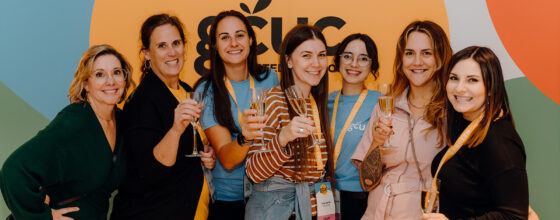Rural Coworking – Our Journey

Does being rural change coworking?
We opened Cohoots in 2014 in the small Australian town of Castlemaine, population 8000. It was breaking new ground as far as open, independent spaces in rural areas of our state. Despite enormous support and enthusiasm from our community, our first year was very slow. I imagine that many coworking spaces go through the similar experiences of the initial ‘wow, I love that idea’ to a lack of paid bums on seats – the real market research result.
Being stubborn, passionate and energetic, we hung in there, ran events for all those entrepreneurs in our local community who were lacking support, including most micro enterprises, tradies, young entrepreneurs, school leavers, women. The events didn’t cover costs however they really hit our community’s entrepreneurial nerve. The events are run on a peer learning approach where someone would suggest a topic, we would find the locals with relevant knowledge and put together informal themed networking sessions where conversation, rather than presentation, was the mode.
This approach worked across diverse events and had many positive outcomes like the development of self-reliant interest groups, collaborations, and general enthusiasm across our entrepreneurial community. Most participants weren’t members of our coworking space; they were entrepreneurs in our region seeking connection, support and learning.
Blending our membership community with this broader community approach to local economic development, led to tweaking the coworking model into what we call Inside-Out Coworking, where the beautiful features that happen inside Cohoots with our coworking community are taken outside to the broader community of entrepreneurs. It is a reflection of rural enterprising communities, respectful of their character and their values, rather than an imposition.
There is however a limit to passion driven activities that aren’t financially viable. Despite approaches to various bodies, no-one was keen to support us as we didn’t fit into their guidelines or we were just too different to their institutional thinking or we don’t have large numbers of participants. We realised we needed to hold onto our mission and passion and not modify ourselves to be ‘like them’ in order to get funding.
All this time our membership grew slowly and organically, and has blossomed into a fantastic community itself with the magic of coworking. The slow growth is probably due to many factors not just small numbers in town. Generally speaking rural populations, in comparison to their urban cousins, have much lower incomes, are less consumer oriented, are more self-reliant, live in bigger houses (with office space), are older, and value lifestyle over work. We have also embraced the community approach to coworking, which is harder to market than the ‘we have the best space’ product.
So being independent enables us to follow our values and passion, to be community led (both inside our space and outside), to gather amazing community spirit, do some quite out there activities (like a merkin exhibition), and to be poorer. The memberships cover the expenses but not our salaries, which comes from other work. Rent alone makes up about 70% of the expenses.
Financial viability will always be an issue in small towns, which conversely leads to more creative solutions. These realities have led to some fairly diverse coworking spaces popping up in rural areas in the last couple of years. It also seems like many are struggling to get going, which I think is a good thing although harrowing. It’s much better than investing heavily in something that doesn’t get off the ground. Although, as they say, where there’s a will, there’s a way!
Tim Ford
Founder of Cohoots Coworking and a business enterprise coach, Tim dabbles in the world of rural entrepreneurs in places most are reluctant to tread.
www.cohoots.info










